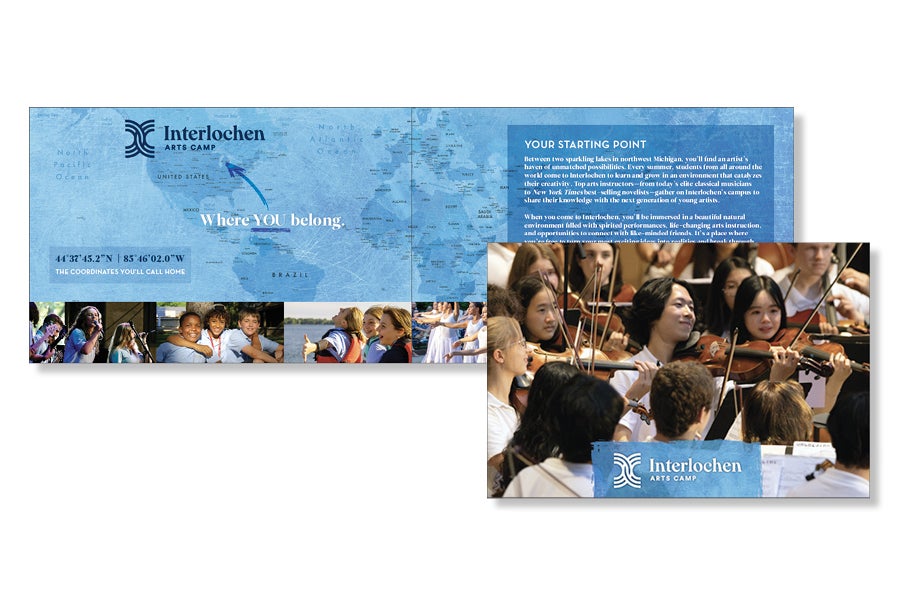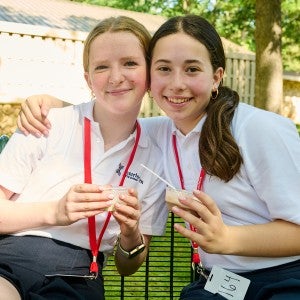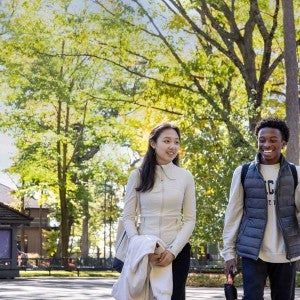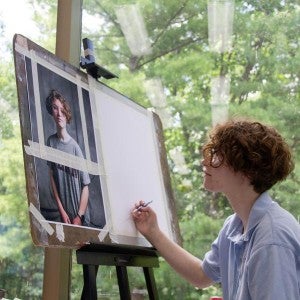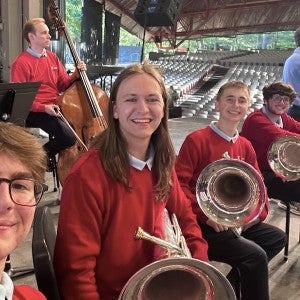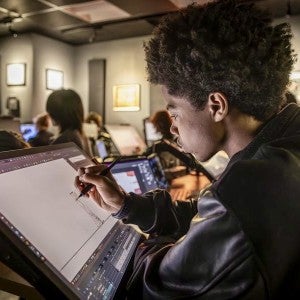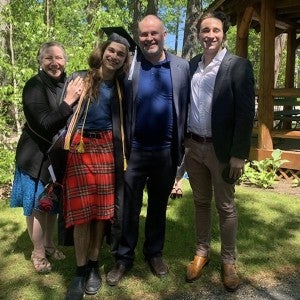Interlochen Arts Camp versus Blue Lake, Brevard, and Idyllwild
How does Interlochen compare to other in-demand summer programs? Here are several differences between Interlochen and three leading arts camps.
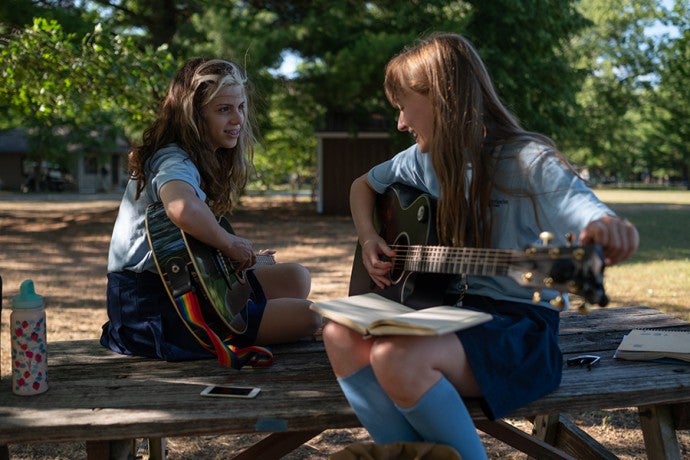
Two singer-songwriters workshop their original songs at Interlochen Arts Camp.
There are a staggering number of summer arts camps in the United States—from small local day camps to world-renowned intensives. With so many amazing programs available, it can be difficult to decide which one is right for your budget, schedule, skill level, and artistic goals.
At Interlochen Arts Camp, we offer a wide variety of programs in creative writing, dance, film, interdisciplinary arts, music, musical theatre, acting, and visual arts for students in grades 3-12 to ensure you find a program that will nurture your talent and propel your passion.
But with so many camps available, it’s important to examine your options and determine which program is the best fit for your unique interests and needs. To help you choose the right camp for you, we’ve highlighted a few of the key distinctions between Interlochen Arts Camp and other in-demand summer arts programs.
Blue Lake vs. Interlochen
Brevard vs. Interlochen
Idyllwild vs. Interlochen
Blue Lake vs. Interlochen
At first glance, it’s easy to assume that Interlochen Arts Camp and Blue Lake Fine Arts Camp are pretty much the same—both are located in Michigan, feature a wide variety of arts programs, boast a scenic lakeside auditorium, and require campers to wear uniforms of powder-blue polo shirts with navy bottoms. A closer look reveals a number of variances between the two organizations:
1. More options for younger students. At Interlochen, students in grades 3-12 enjoy a wide selection of programs. Students in grades 3-6 join Interlochen’s vibrant Junior Division, which offers exciting programs such as Arts Exploration, Advanced Strings, and Young Actors Workshop.
While Blue Lake Fine Arts Camp has a robust selection of majors for middle and high school students, only band and orchestra are available for those in grades 5-7. Younger string and piano students can also participate in Blue Lake’s Suzuki Family Camp, which welcomes budding musicians ages 2 and up.
2. Specialized curricular offerings. Interlochen Arts Camp students can focus on specific areas of interest within their chosen artform, such as music composition, popular music, screenwriting, novel writing, fashion, or stage management. Blue Lake’s programs are more general, with only a handful of tracks available within each major.
3. Artistic and recreational minors. All students at Camp Bernstein—Blue Lake’s junior division—and many of Blue Lake’s Central Camp students take a minor during their session. Minors allow students to explore artforms outside their major, participate in fitness or recreation activities, or enhance their musical studies with courses such as Try a New Instrument, Campfire Guitar, Piano, or Music Theory. Minors or electives are not available for students at Interlochen Arts Camp.
4. Session lengths. At Blue Lake, all camp sessions are 12 days long. Interlochen Arts Camp students can choose a session length that works best for their goals and schedules, with one-, two-, three-, four-, and six-week programs available.
Brevard vs. Interlochen
If you’re a high school classical musician, both Interlochen Arts Camp and the Brevard Music Center Summer Institute will provide a rigorous and fulfilling experience. Curricularly, the two programs are similar: both feature opportunities to receive guidance from acclaimed professional artists and master teachers; participate in private lessons, master classes, and concerto competitions; and play in solo, chamber, and large ensemble concerts. Beyond the differences in climate—Brevard, located in North Carolina’s Blue Ridge Mountains, is both warmer and wetter—distinctions between Brevard and Interlochen include:
1. Artistic disciplines. At Interlochen, students can study seven different art forms, including music, theatre, dance, visual arts, creative writing, film, and interdisciplinary arts. As its name suggests, the Brevard Music Center Summer Institute primarily focuses on music.
2. Age divisions. As noted above, Interlochen offers programs for students in grades 3-12, which are divided into three age-appropriate divisions: Junior (grades 3-6), Intermediate (grades 6-8), and High School (grades 9-12) Brevard’s programs are open to students ages 14 to 29, with separate divisions for high school and college students.
3. Community size. Each summer, more than 500 students ages 14 to 29 join approximately 80 faculty members at Brevard Music Center. Interlochen Arts Camp offers a larger community of creatives, welcoming more than 3,000 students and hundreds of faculty and support staff each year.
4. Flexible sessions. Like Interlochen, Brevard provides a variety of session lengths to accommodate students’ busy summer schedules. Brevard takes flexibility a step further by giving students applying to longer programs the option to enroll for a half session.
Idyllwild vs. Interlochen
Though Idyllwild Arts is a world away from Interlochen geographically, the two institutions share many similarities: Both boast arts boarding schools, summer arts camps, and educational opportunities for adults. Here are a few ways that the Idyllwild Arts Summer Program diverges from Interlochen Arts Camp:
1. Age divisions. Idyllwild offers age-appropriate summer programs for artists ages 5 through adulthood. Programs for the very youngest children, however, are day camps only; campers must be 10 or older to attend Idyllwild as a residential student.
2. Residence life. Interlochen Arts Camp provides a true “camp” experience: residential students share a cabin with 11 to 15 other young artists. Boarding students at Idyllwild sleep in dormitories during their session. Each dorm room houses a maximum of three students and features an en suite bathroom.
3. Opportunities to study Native American art. Idyllwild has hosted Native American arts workshops and programming for more than 70 years. In addition to options in music, theatre, dance, and other disciplines, Idyllwild campers can choose to focus their studies in Native American art by selecting one of the institution’s 14 hands-on summer workshops.
While Interlochen does not currently offer a major in Native American art, Arts Camp students can learn more about the history and culture of northern Michigan’s Indigenous people through the Environmental Exploration program.
4. Rich traditions. Interlochen Arts Camp has been a destination for young creatives and master instructors since 1928. Many of the Camp’s traditions, including bugle calls, morning line-up, blue-on-blue uniforms, and the perennial end-of-session performance, “Les Préludes,” date back to the late 1920s. Idyllwild, which opened in 1950, is more casual: students are allowed to make their own wardrobe choices, and high school students are responsible to wake up, head to breakfast, and get to class on their own.
Finding the right fit
Have you decided an arts camp is where you want to spend your summer? Start your decision-making process by making a list of what you want from a camp, such as how long of an experience you’d like, what you want to study, the type of environment that suits you best, and which state you'd like to visit. Next, spend some time exploring your options. With careful planning, preparation, and research, you’ll find the perfect fit.
Want more information about Interlochen Arts Camp? Explore our programs or start your application today.
Dive deeper into Interlochen Arts Camp with a free digital viewbook
